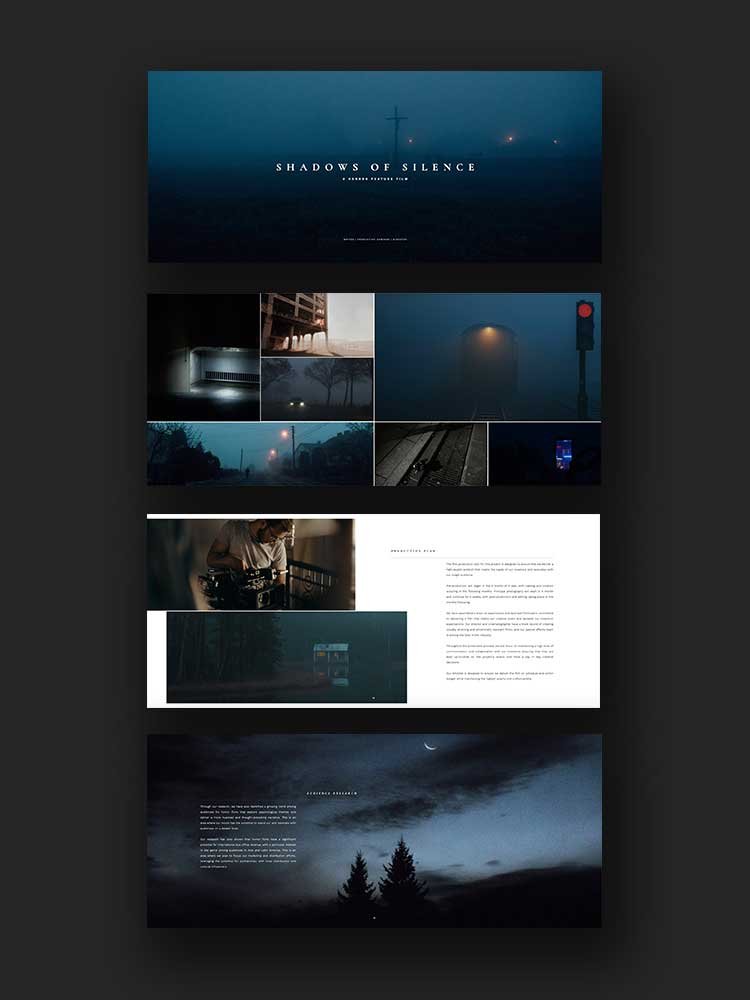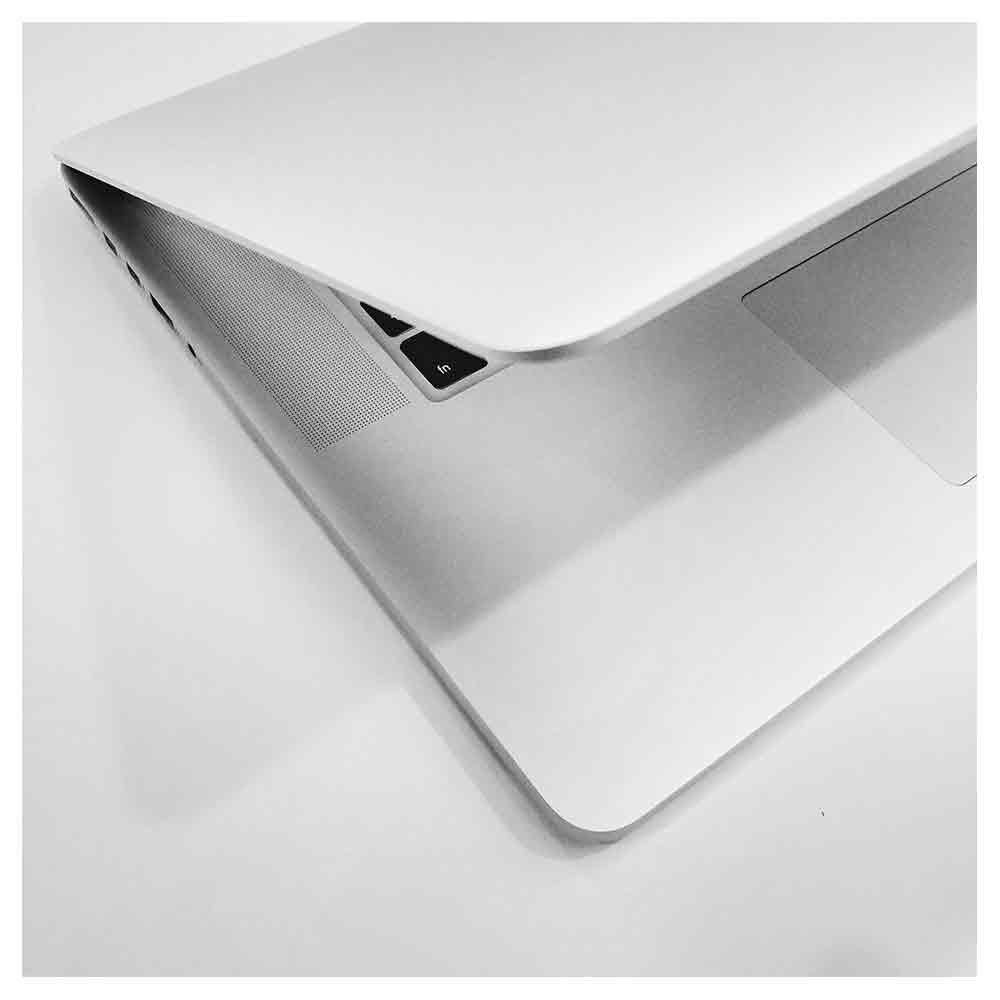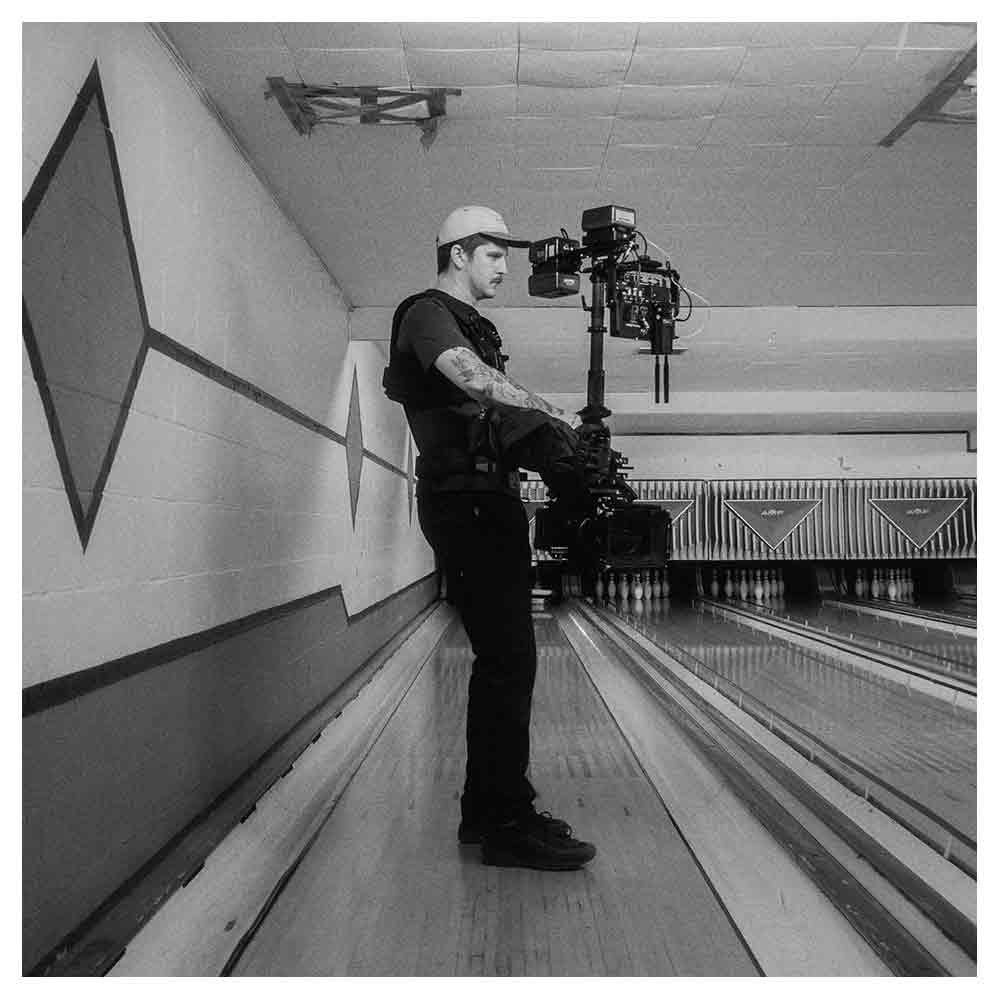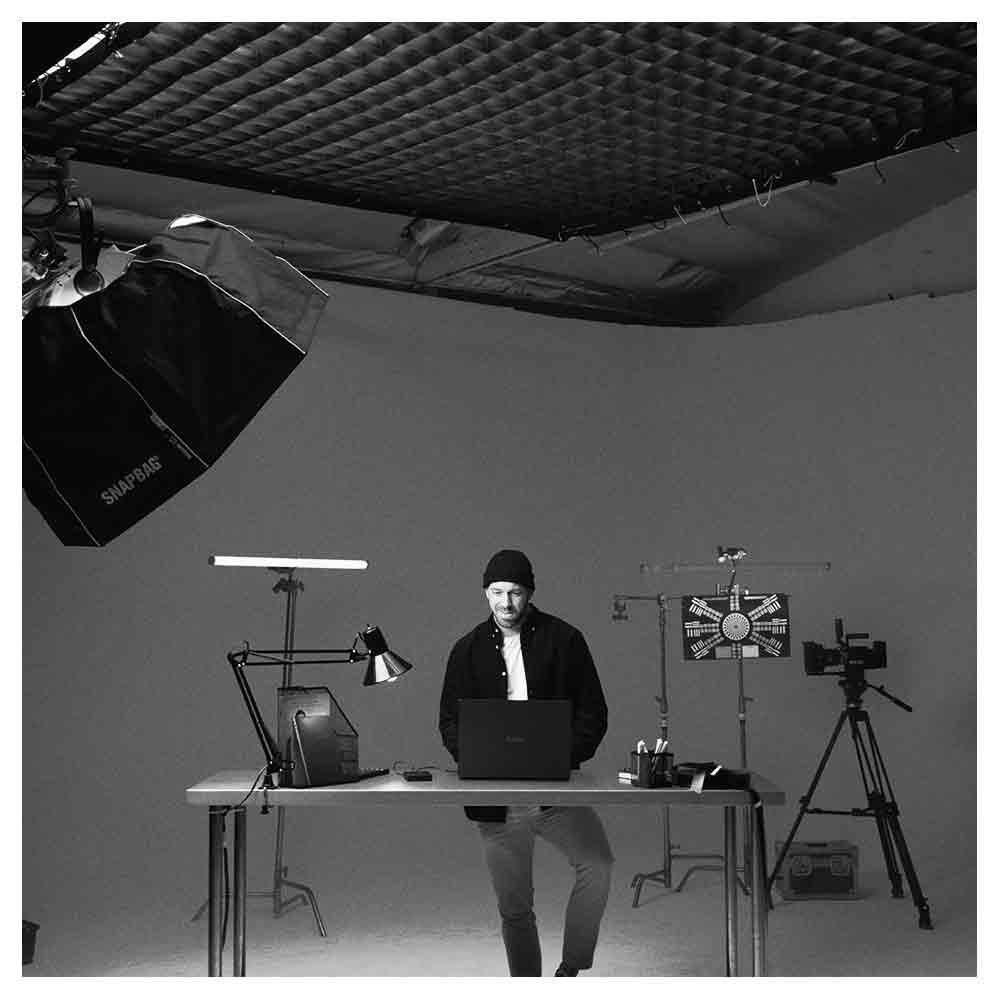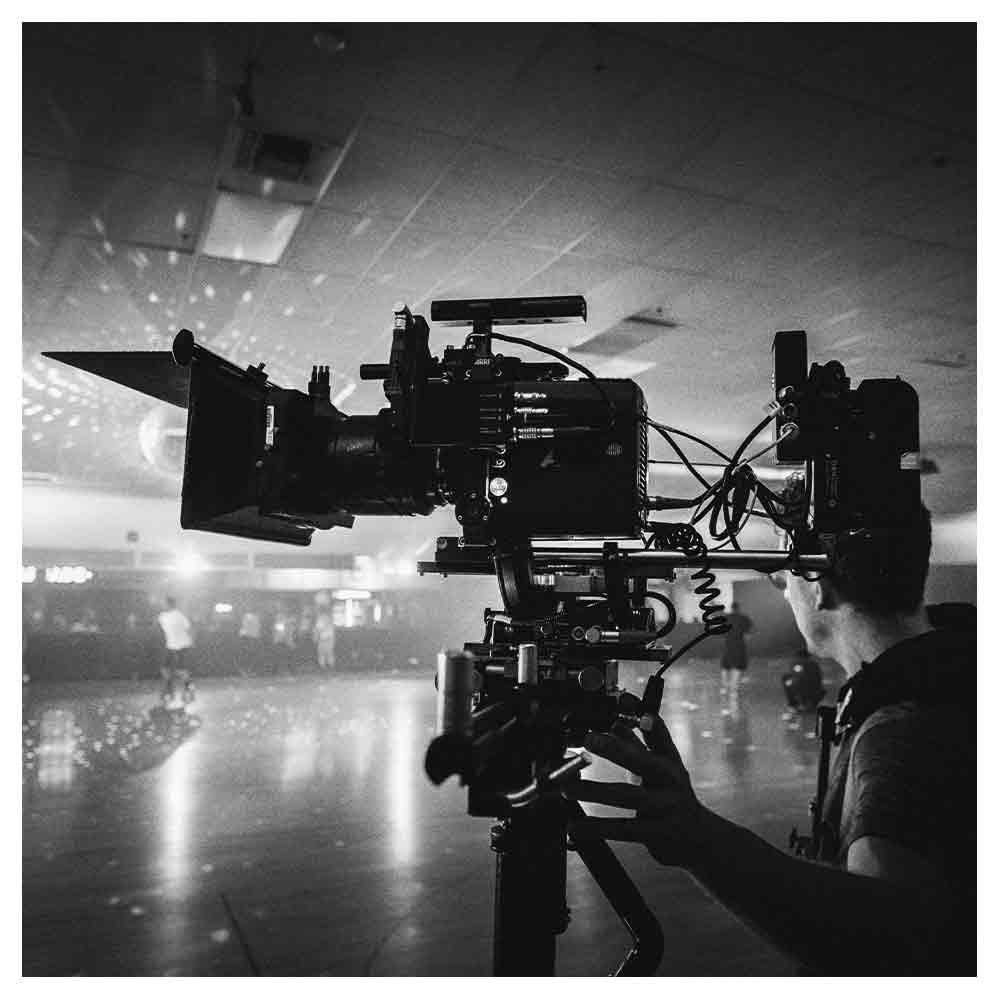How To Make A Pitch Perfect Film Pitch Deck
In the cutthroat world of Hollywood, where only the most financially lucrative ideas seem to survive, a compelling pitch deck can be the difference between a blockbuster hit movie and a box office flop.
In essence, a film pitch deck is a well-designed visual representation of a screenplay that is a powerful marketing tool for writers and filmmakers to ignite investors' imaginations, secure crucial funding, and turn your (passion) project into a cinematic masterpiece.
But what does it take to write a fantastic pitch deck that stands out from the rest?
In this blog, I wanted to dive deep into the art of pitching by creating a captivating film pitch deck to help you turn your cinematic dreams into a reality.
Whether you're pitching as a first-time filmmaker or a seasoned pro, I hope the tips and tricks outlined below can help you take your pitch from good to great and secure the funding you need to bring your vision to life.
Table of contents:
What is a film pitch deck?
A film pitch deck is a concise and visually oriented pitch document to showcase your film project and spark interest with potential investors, producers, and other industry professionals. It is made in the pre-production phase by the director, writer, or someone working at the production company.
The purpose of this digital elevator pitch is basically to help you convey all the information and movie ideas in your head to the people at the other end of the table so they can make an informed decision about investing in your next idea or project.
This can either be financially from an investor’s point of view or time-wise from a cast and crew perspective.
Why is a film pitch deck important?
A film pitch deck is essential in securing funding and support for a film project. Here are some key reasons why a pitch deck is crucial:
Offers a complete overview
A pitch deck is a concise version of the film project. In elevator pitch style, it presents potential investors with a thorough overview of the story, characters, budget, and possible return on their investment. Its goal is to let investors quickly grasp the project and its potential without reading and reviewing long scripts or business plans.
Demonstrates professionalism
A well-prepared pitch deck displays your professionalism, creativity, and business acumen. It conveys to investors that you have meticulously considered all aspects of your project and have a definite plan for bringing it to fruition. Therefore, a refined pitch deck builds trust with investors and can increase the likelihood of securing funding.
Attracts investment
The primary objective of the actual pitch deck is to draw investment. A compelling pitch deck can arouse interest in your project and persuade investors to support your film. It is a powerful tool for convincing investors that your project is a valuable investment.
Sets you apart
An effective pitch deck can make you stand out from the competition in a saturated marketplace, help showcase your unique vision, and distinguish your project from other film projects.
What should a film pitch deck include?
In short, a pitch document should include everything you need to visualize a sense of the atmosphere of your story world, tone, style, project scope, and character arcs in the reader's mind while providing solid information to support your idea and its potential financial success.
Because every film project is different, there is no strict rule for what to include and what not, so the exact content of a film pitch can vary depending on the project.
But at the bare bone minimum, I believe a film pitch deck should always include the following seven items:
Cover slide
The cover slide or title page is your project's first impression. Use a captivating front cover to set the visual tone, including a title (can be a work in progress).
Logline or premise
A one or two-sentence summary of the project's story.
Format
Is it a TV show, feature film, documentary, etc.?
Genre
Niche down as much as possible. Rom Comedy instead of Comedy.
Synopsis
A plot synopsis outlines the story plot in a three-act structure (beginning-middle-end).
Contact information
This is your call to action at the end of the film pitch deck (don't misspell this!).
High-quality imagery
You must always include high-quality cinematic imagery that matches the text, no matter what story you want to tell.
On top of the above, the following four key elements are usually included:
Character breakdown
A detailed breakdown of the story's main characters (list them in order of importance).
Story world description
A detailed breakdown of when and where the story occurs.
Tone & Style
A visual overview in moldboard style to help reflect the project's feeling so readers will interpret the story similarly.
Team member breakdown
Include information about the talent involved, like the writer, director, and key production team members attached to the project, along with their experience, credits, and any relevant awards that can help you sell your project (50 words max per crew member).
Depending on the project pitch, you can possibly include the following seven items on top of the core elements mentioned above as well:
Concept art
Visual elements that help to bring the story, story world, and characters to life and give investors a sense of the look and feel of the film.
Comparables
This is an overview of similar films in the same genre, including their budget and box office numbers, to help show your film is a great investment opportunity.
Production plan
A detailed breakdown of the production timelines and budget.
Target Audience
A detailed analysis of the targeted genres, demographics, and intended audience.
Financial projections
A study of the projected costs, a summary of the financing secured so far, and the project's potential profitability and investors' potential return on investment.
Marketing and distribution plan
A breakdown of how you plan to market and distribute the film to help achieve the return on the investment.
Director's note
If there's already a director on board the crew, it makes sense to use this section to express their relationship to the subject of the film, their noteworthy experience, and their artistic approach and aesthetics for this project.
How to write a film pitch deck?
For writing pitch decks, just like music video treatments, documentary treatments, and commercial treatments, there are no set, written-in-stone rules regarding the layout.
As every project is different, and everyone has their own style, preferences, and approach, no black-and-white blueprint will work for everyone and every project. There are only guidelines and best practices that you can use as a starting point.
But to help provide you with some guidance, I have summarized a bullet-point guideline for creating film pitch decks. Of course, depending on the size and scope of your project and how much detail you wish to include, you can vary the order and number of pages.
Page 1
Create a clean title page to set your film's visual tone, mood, and ambiance. Include the project title and your contact details.
Page 2
Craft an executive summary to hook and intrigue investors with a single-page breakdown covering all your project's crucial aspects. Include the logline, format, genre, project length, budget, financial projections, investment potential, target audience, and production timeline.
Pages 3-9
Write a punchy, tightly edited synopsis (story summary of 600-1,000 words) communicating the film's story in a three-act structure (beginning, middle, and end).
It’s cliche, but a picture says more than a thousand words, so include the most stunning visuals to support the words on the paper. This article might be helpful if you need help finding the right visuals.
Pages 10-16
Develop short, distinctive character profiles for up to six main characters (max. 400 words each).
Pages 17-19
Include a mission statement for the project to outline why it matters and what makes it unique. Covers tone (does the text reflect the visual tonality of the project), target audience, marketability, timeline, and performance data of comparable projects.
If you bring on board a cast or crew with memorable credits, include those with a picture and a short biography to add credibility (and financial reassurance) to the project.
Page 20
Conclude with a contact page and a call to action, including your contact details (don’t misspell them!).
What to Avoid When Making a film pitch deck?
Creating a successful film pitch deck requires careful considering what information to include and what to leave out. Here are some key points on what to avoid:
Grammar & Punctuation Mistakes
Grammar and punctuation errors are the most significant and essential turndown you must prevent. Such errors can undermine the professionalism of your pitch and confuse investors.
You should meticulously proofread your pitch deck and utilize software like Grammarly to avoid these mistakes.
Irrelevant information
While providing a comprehensive overview of your film project is important, focus on the core message and avoid including information irrelevant to your pitch.
This may consist of lengthy biographies, resumes of the creative team, or other unrelated details that need to be clarified in the grand scheme.
Complex financial information
Avoid including overly detailed financial information that may be difficult for investors to understand. Keep your budget and financial projections clear, concise, and easily comprehend.
Avoid using complicated accounting jargon or assumptions that may create confusion or mistrust.
Ambiguous statements
Avoid ambiguous or vague statements that may cause confusion or disbelief or make it difficult for investors to understand your message.
While presenting your project in the best possible light is essential, avoid making exaggerated or unrealistic claims about its potential or success. Be honest and transparent about the risks and challenges of bringing your project to fruition.
Buzzwords and industry jargon
While industry-specific language can be helpful, it's important to be mindful of your audience because you don't know in whose inbox your pitch decks might end up.
Avoid using excessive film industry jargon or buzzwords that may be unfamiliar to investors or create a sense of exclusivity.
5 tips for making a film pitch deck
Here are a few key steps to keep in mind:
Understand your audience
Before you begin building your pitch, it's essential to understand your audience. Who are you pitching to? What do they care about? What do they want to see? Understanding your audience will help you create a presentation tailored to their needs and interests and make it easier to get them on board.
Keep it simple
A pitch deck should be concise and easy to understand. Avoid using jargon or industry-specific language that your audience might not understand. Use visuals to help tell your story, and keep text to a maximum of 200 words per slide.
Show, don't tell
Use visual elements such as concept art, reference photos, paintings, movie stills, or even storyboards to show potential investors what your film will look like rather than just telling them. This will help them better understand your film's look, feel, and vision.
Protect readability
If it's too hard to read, people won't read it. Use contrasting backgrounds and fonts (dark font against a light background and vice versa.
Avoid text colors that blend too much with the background). Try to keep the design of your pitch to two, a maximum of three fonts, and use white space, headings, and colors to make text elements stand out.
Be prepared for questions.
Expect to be asked questions about the film. Be ready to elaborate on the details and have answers to any possible questions to ease the investors' concerns.
Conclusion
In conclusion, creating a film pitch deck is essential for any filmmaker or producer looking to get their project and secure funding.
By compiling your vision, story, and team in one concise and visually engaging document, you increase your chances of grabbing the attention of investors, distributors, or collaborators.
Remember that pitch decks don’t sell the project but are only a tool to spark interest. A great script with an interesting story and a strong, credible team is what will eventually seal the deal.
Frequently Asked Questions About Film Pitch Decks (FAQs)
How long should film pitch decks be?
A film pitch deck should ideally be around 10-20 pages long. However, it is essential to tailor the length to the specific project and the preferences of your investors.
The key is to ensure that your pitch deck is engaging and informative without overwhelming the reader with too much detail.
Include visually heavy presentation documents and minimal text to convey your movie ideas effectively.
Remember that great cinematic visuals can create a strong impression on potential producers and production company executives.
Can I use images and artwork for other shows and feature films for my pitch deck?
You can use images and artwork from TV shows and movies like "Stranger Things" and "Adventure Time" for your pitch decks, as long as they are used as a reference tool to help visualize the proposed world, characters, and tone of your project.
Remember that 99% of the time, you will send your pitch deck to private entities to review your document, which won’t be published online.
Check out this film pitch deck imagery resource list if you want great imagery.
How should you send a film pitch deck to investors?
There are various ways to share your pitch decks with investors. Email, in-person meetings, and pitch meetings are all viable options.
If you choose to email your pitch deck, follow up with a phone call or a face-to-face meeting to discuss your project in more detail.
You can also leverage social media platforms like LinkedIn to connect with investors and share your pitch deck.
Ensure your pitch deck includes all the information necessary for investors to understand your film synopsis and the core elements of your story.
Do I need a professional graphic designer to create an actual pitch deck?
Hiring a professional graphic designer to create your pitch decks is unnecessary, but having a visually pleasing, polished, well-designed pitch deck is always a good idea.
It will make a good impression on investors and increase the chances of getting funding. You can use creative presentation templates online presentation tools such as PowerPoint, Google Slides, Canva, or Prezi, but making it visually pleasing and easy to understand is recommended.
Include key elements and visually oriented content to ensure your pitch deck effectively conveys your movie ideas.
If you want to hire a professional graphic designer, you can try your luck on Fiverr and Upwork. Working with a graphic designer can help you create a more persuasive document that showcases your creativity and vision.
Remember that the visuals should lead the reader through the pitch deck, immersing them in the visual world and capturing the specific vibe of your project.


